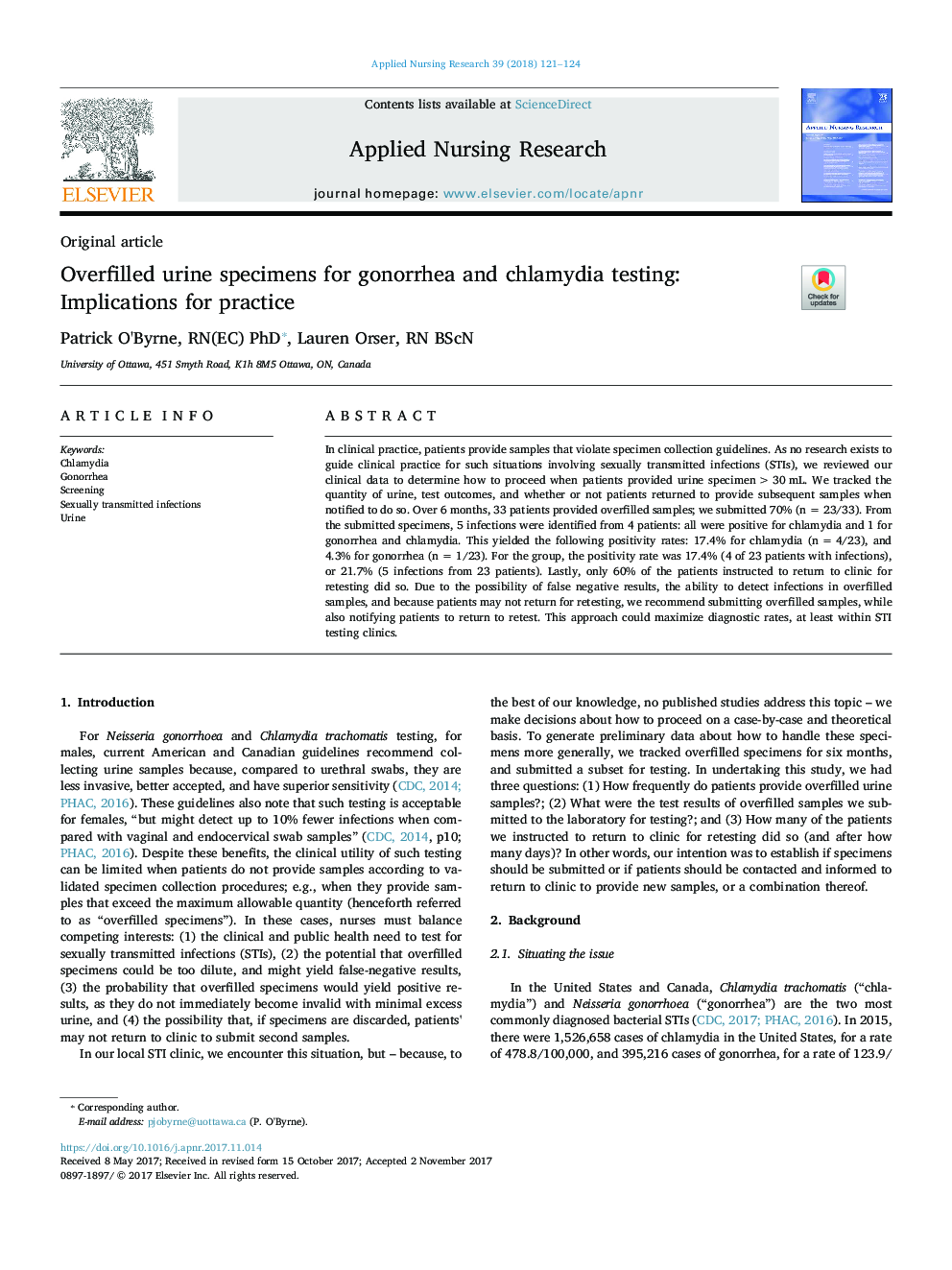| Article ID | Journal | Published Year | Pages | File Type |
|---|---|---|---|---|
| 8567637 | Applied Nursing Research | 2018 | 4 Pages |
Abstract
In clinical practice, patients provide samples that violate specimen collection guidelines. As no research exists to guide clinical practice for such situations involving sexually transmitted infections (STIs), we reviewed our clinical data to determine how to proceed when patients provided urine specimen > 30 mL. We tracked the quantity of urine, test outcomes, and whether or not patients returned to provide subsequent samples when notified to do so. Over 6 months, 33 patients provided overfilled samples; we submitted 70% (n = 23/33). From the submitted specimens, 5 infections were identified from 4 patients: all were positive for chlamydia and 1 for gonorrhea and chlamydia. This yielded the following positivity rates: 17.4% for chlamydia (n = 4/23), and 4.3% for gonorrhea (n = 1/23). For the group, the positivity rate was 17.4% (4 of 23 patients with infections), or 21.7% (5 infections from 23 patients). Lastly, only 60% of the patients instructed to return to clinic for retesting did so. Due to the possibility of false negative results, the ability to detect infections in overfilled samples, and because patients may not return for retesting, we recommend submitting overfilled samples, while also notifying patients to return to retest. This approach could maximize diagnostic rates, at least within STI testing clinics.
Related Topics
Health Sciences
Nursing and Health Professions
Nursing
Authors
Patrick RN(EC) PhD, Lauren RN BScN,
